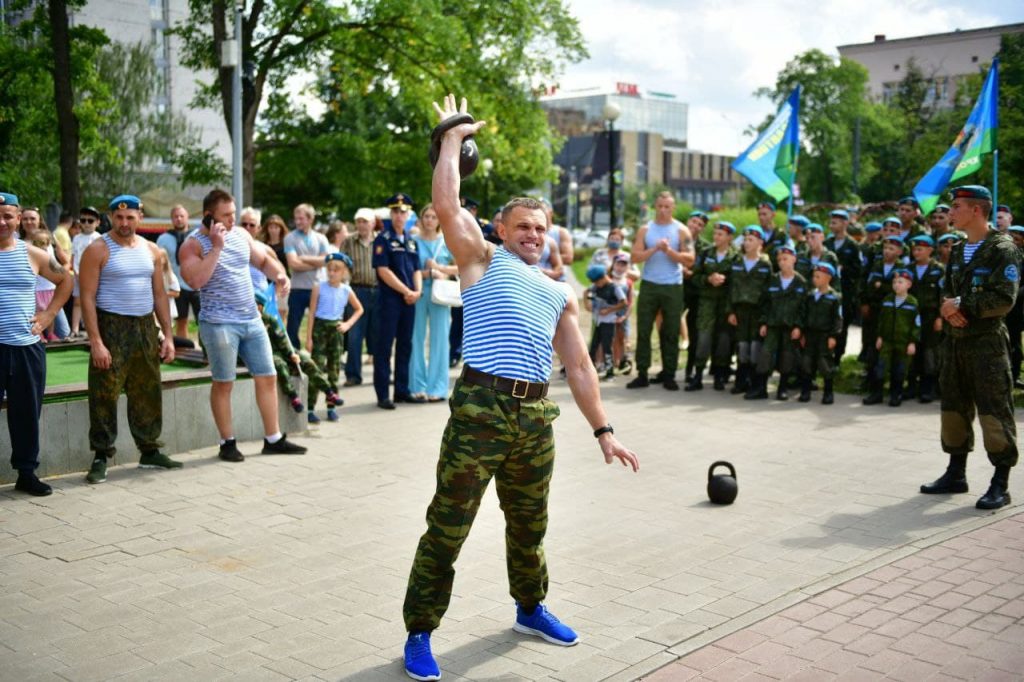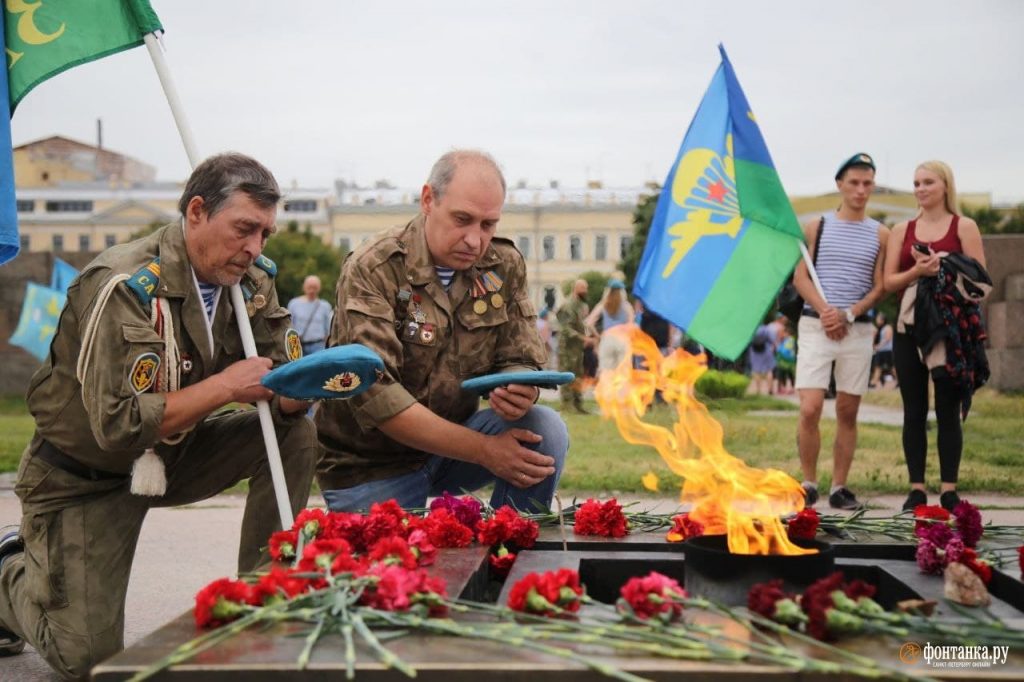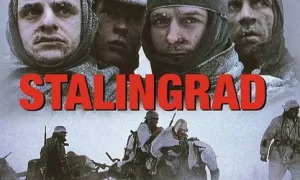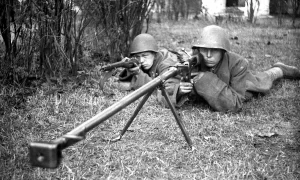Day of the Airborne Forces is a memorable day. August 2 marks the birthday of the Soviet Airborne Forces.

Day of the Airborne Forces is celebrated on August 2 on the basis of the Decree of the President of the Russian Federation, dated May 31, 2006, “On the establishment of professional holidays and memorable days in the Armed Forces of the Russian Federation” in recognition of the merits of military specialists in solving problems of ensuring the defense and security of the state
Day of the Airborne Forces, which is a professional holiday of active and reserve military personnel of the Airborne Forces, is traditionally celebrated throughout Russia, Belarus and other CIS countries.
During the festival, many cities traditionally host demonstration performances of paratroopers, concerts, charity events, folk festivals, craft fairs and an exhibition and sale of souvenirs.
 Airborne troops of the USSR
Airborne troops of the USSR
The Airborne Troops of the Armed Forces of the USSR ( Airborne Forces of the USSR Armed Forces) – a branch of the Armed Forces of the USSR, was intended to cover the enemy by air and perform tasks in his rear to disrupt troop control, capture and destroy ground elements of high-precision weapons, disrupt the advancement and deployment of reserves, disrupting the work of the rear and communications, as well as covering (defending) certain areas, areas, open flanks, blocking and destroying landed air assault forces, penetrated enemy groupings and performing other tasks.
In different years of its existence, the Airborne Forces were both a subordinate branch of the armed forces and a separate branch of the armed forces.
From the moment the first formation was created in June 1931 and until August 1938, the airborne units were in a dual subordination. In terms of combat training, airborne and aviation support, they were supervised by the command of the Red Army Air Force, and in terms of combat control, they were subordinate to the territorial commands of the ground forces.
Only in August 1938, with the creation of several airborne brigades, the airborne troops were withdrawn from the subordination of the Air Force and transferred to the subordination of the command of the ground forces.


Pre-war period
Stages of the creation and reform of troops
The first precedents of the combat use of tactical airborne assault forces in the USSR Armed Forces, when aircraft delivered infantry to the area of hostilities and landed them after landing on the ground (the so-called “landing landing”), were the events in hostilities in Central Asia during the years of the struggle against the Basmachi, which We passed under the leadership of the commander of the Central Asian military district Dybenko PE.
So on May 27, 1928, on 3 Junkers-13 planes, 15 Red Army men from the 84th Cavalry Regiment were delivered to a given area of the Karakum Desert, who destroyed a band of Basmachi in the border area. To complete the combat mission, the Red Army by July 5 were also taken out of the desert by aircraft.
On April 23, 1929, a group of 6 aircraft was sent to the area from the city of Termez to the area of the city of Garm in Tajikistan, which delivered a detachment of 45 soldiers of the cavalry brigade. During the fighting, the detachment destroyed an armed group of 80 Basmachi.
A year later, the implementation of tactical airborne assault forces began to be practiced in the course of military exercises. On March 13, 1930, under the leadership of the commander of the troops of the Leningrad military district Tukhachevsky M.N., an air tactical landing was planned, during which 6 TB-1 aircraft were to land 70 Red Army soldiers. Due to bad weather conditions, only 4 aircraft were able to land and unload, which transferred 45 people, 4 machine guns and 600 kilograms of various cargo. The landed detachment conditionally destroyed the railway bridge across the Shelon River near the Shimsk station near Novgorod. At the end of the mission, the landed group was returned by aircraft back to the airfield.
Initially, the question of using parachutes for landing was not considered. The parachute at that time was considered solely as a means of rescuing military pilots.
The first proposal on the use of parachutes and the organization of parachute landing was raised by the brigade commander of the Red Army Air Force Leonid Grigorievich Minov, who in 1929 visited the United States in order to purchase rescue parachutes for military pilots. On Minov’s personal initiative, a group of 30 paratroopers from among the volunteer pilots of the 11th Aviation Brigade of the Moscow Military District was trained by the summer of 1930. In the period from 26 to 29 July 1930, 59 training and demonstration parachute jumps were held at the airfield near Voronezh.
The chief of the Red Army Air Force Baranov P.I. suggested to Minov by August 2 to organize the training of paratroopers to perform a group jump at the exercises (at that time they were called “maneuvers”) of the Moscow military district near Voronezh, which imitated the release of a group of saboteurs behind enemy lines. Preparations for the landing was completed by the end of July 31.
On the morning of August 2, 1930, at 9 am, the first demonstration group parachute landing was carried out, during which one F-62 “Goliath” aircraft landed 12 people in two flights by parachutes, and three R-1 aircraft threw bags of weapons by parachutes. Despite the fact that all paratroopers who participated in the demonstration exercises were Air Force pilots, it is from this date that it is customary to chastise the creation of the USSR Airborne Forces.
Subsequently, the exercises with the landing went on an increasing scale. On September 9, 1930, at the LenVO maneuvers, a landing force was landed as part of a rifle company with standard weapons. For these purposes, a non-standard motorized detachment was created from the units of the 11th Infantry Division, consisting of 155 Red Army soldiers who had 20 cars, 20 motorcycles with sidecars, 44 bicycles (in the terminology of that time – scooters), 61 machine guns and 10 recoilless DRP-4 guns designed by Kurchevsky… The detachment was led by a representative of the district headquarters Lukin ED.

Armament of the Airborne Forces in the pre-war period
The small arms in the airborne troops did not differ in any way from the weapons of the rifle troops (infantry). The main difference from the rifle troops was the great abundance of automatic small arms: submachine guns PPD-40 and PPSh-41 ; automatic rifles SVT-38, SVT-40 and AVT-40.
A new type of weapon that appeared in service with the airborne brigades was ROKS-2 knapsack flamethrowers. According to the state, each brigade was supposed to have 288 flamethrowers.
The armament of the air defense units was similar to that of the rifle formations – in the anti-aircraft machine-gun companies there were large-caliber anti-aircraft machine guns DShK and installations with quad 7.62-mm Maxim machine guns.
In the initial period, it was proposed to equip the airborne troops with light 76-mm dynamo-jet cannons ( recoilless guns ) DRP-4 designed by Kurchevsky as artillery weapons. But due to the large number of shortcomings, this sample was abandoned.
The artillery units of the airborne brigades received the following guns at that time: 76-mm mountain gun model 1909, 76-mm gun model 1927, 37-mm anti-tank gun model 1930, 45-mm anti-tank gun model 1932, 82 -mm battalion mortar model 1936. Since the units of the airborne brigades were divided according to the landing method into an airborne and landing group, the artillery units were supposed to be delivered and dropped either by gliders or by landing from aircraft. This separation approach existed until the late 1950s, before the An-12 wide-body aircraft entered service with the military transport aviation.
By the beginning of World War II, the process of arming the airborne corps had not yet been completed. By June 20, 1941, 11 airborne brigades were still in the formation phase. In total, they were armed with 111 guns and 62 82-mm mortars. Each brigade had an average of 16 guns. The individual artillery battalions of the brigades were increased by one anti-tank battery of 45 mm guns. The mortar company was included in the artillery division, and the paratrooper battalions received a mortar platoon of 50-mm mortars of the 1938 and 1940 model.
From the samples of armored vehicles in the pre-war years, the airborne formations received the B-8 armored car and the T-27 and T-37A light tanks, which could be airlifted by TB-3 bombers on an external sling.

Aviation and airborne support in the pre-war period
Since the creation of the first airborne formations, in the USSR for a long time there were no specialized military transport aircraft (transport aviation) designed to carry out massive parachute or landing assault forces. The Farman F-62 “Goliath” aircraft from which the first test landings were carried out was the first model of the Red Army Air Force’s transport and landing aviation. The plane took on board only 6 parachutists. In total, the Soviet government in France in 1926 purchased 4 units, which were part of the 11th Aviation Brigade in Voronezh. For the delivery of small cargoes for the dropped assault forces, Russian reconnaissance aircraft R-1 were initially used. From them, soft containers were dropped by parachutes in which weapons and ammunition were added.Subsequently, for the same purpose, the R-5 and U-2. With the introduction of the ANT-9 aircraft, they were also involved in parachute landings, but due to the low capacity (8 paratroopers), it also did not meet the requirements.
For the aviation support of the airborne assault forces, they were forced to attract heavy bombers that were in service with the Red Army Air Force, which were also structurally little adapted for these activities. The designers developed various additional devices that made it possible to transport paratroopers on reconnaissance aircraft and heavy bombers outside the vehicle’s fuselage. So for the scout R-5, G-61 cassettes were developed under the wings, which made it possible to transport 4 paratroopers. For the TB-1 bomber, a detachable KP-1 suspended cab was developed, which was attached from the bottom of the fuselage between the front struts, which made it possible to carry 12 paratroopers or 1,200 kilograms of cargo.
Mass landings became possible after the TB-3 heavy bombers began to be used. Initially, these bombers were not adapted to accommodate a large number of paratroopers and could only accommodate 12 soldiers placed in uncomfortable conditions in the bomb bay and in the wing cavities. After the re-equipment, the TB-3s were able to accommodate up to 30-35 paratroopers, in the former cramped inconvenient conditions.
The military leadership of the USSR set the task of developing new specialized transport and landing aircraft instead of using bombers unsuitable for this. The problem was partially solved only in 1940, when licensed production of American DC-3 “Dacota” aircraft was established in the USSR under the name PS-84 and after Li-2 (from September 1942). The USSR originally purchased the DC-3 in 1936 from the United States as a passenger aircraft. The equipped transport and landing version of the PS-84 took on board 25 paratroopers with equipment. For the first time PS-84 were used for parachute tests in June 1940 near Leningrad.
For heavy bombers TB-3, suspension units were developed, which made it possible to transport artillery guns, light tanks T-27 and T-37A, cars under the fuselage.
The first landing gliders from several design bureaus were offered to the Red Army in 1932. The tests were carried out by gliders designed by Gribovsky V.K. G-29 and designs by Kolesnikov D.N. and Tsybin P.V. KTs-20. In 1932, also in the Experimental Design Bureau of the Red Army Air Force, the design of the G-63 airframe with a carrying capacity of 17 people and 500 kg of cargo, as well as the G-64 airframe with a carrying capacity of 50 people, began. It was planned to tow the G-63 by an R-5 reconnaissance aircraft, and the heavier G-64 by a TB-1 bomber.
However, the main glider of the Red Army of the pre-war period was the A-7 developed by the Antonov Design Bureau, which they began to develop in 1938. In 1940, the glider was tested and entered service. The glider accommodated the pilot and 7 paratroopers with weapons. On January 23, 1940, the Office for the production of airborne transport gliders was created at the People’s Commissariat of the Aviation Industry.
At the same time, several design bureaus began designing a promising landing glider. In June 1941, tests began on the BDP (Large Airborne Glider), which was towed by SB or DB-3 bombers…. The glider accommodated 16 paratroopers with full equipment. In connection with the outbreak of the Great Patriotic War, all work was curtailed. All other samples of landing gliders were developed and produced already in wartime.
The first parachute systems for landing in the USSR appeared in 1929, after they were purchased from the United States. Initially, these were parachute systems manufactured by the American company Irving Air Chute Company, designed to rescue airplane pilots. Since April 1930, the USSR has launched the production of its own parachute systems. Initially, it was a PT-1 model, which was a licensed copy of the Irving parachute. Since 1931, the production of specialized parachute systems designed by P.I. Grokhovsky was launched under the designation G-1. By the end of 1931, it was replaced by a more advanced parachute designed by M.A. Savitsky.PD-1, which, in addition to the main dome, also had a spare one.
Since 1933, an improved version of the PD-2 has been produced. Cargo parachute systems designed by Grokhovsky G-2 and G-3 were manufactured as cargo parachutes. In 1936, the parachute PD-6 was adopted by the airborne formations, the main difference of which was the possibility of both forced and manual deployment, which increased the safety of the landing. This parachute has been repeatedly improved in the PD-7, PD-8 and PD-10 modifications. Since 1941, the PD-41 landing parachute entered service, which had a square shape in a horizontal projection and was made of percale fabric, which, in contrast to the previously available parachutes made of natural silk, significantly reduced its cost and made it possible to master it in mass production.
The first massive parachute drops, accompanied by accidents, indicated the need to create special devices that would increase the reliability of parachute deployment. In 1939, the Doronin brothers (Nikolai, Vladimir and Anatoly) developed the PPD-1 automatic parachute deployment device. In 1940, the designer LV Savvichev developed the PAS-1 device.
Since, in addition to the landing delivery of weapons and military equipment, they were supposed to be dropped by parachute, the design of cargo parachute platforms for the release of bulky cargo G-37a, G-38a, G-43, G-62 was started. On these platforms, it was supposed to drop guns, pickup cars, motorcycles and light T-27 tanks from the TB-1 bomber. For these platforms, cargo parachutes G-56, G-57, G-58, G-59a and G-72 were developed.
The issue of aviation support for the airborne troops by the beginning of the Great Patriotic War had not been resolved. The capabilities of the transport and landing aviation did not allow the transfer of even parts from all the airborne formations created.
Participation in hostilities
In the pre-war period, airborne brigades were twice involved in hostilities as ordinary infantry.
The 212th Airborne Brigade took part in the hostilities on the Khalkhin-Gol River in Mongolia in 1939. As a result of the battles, 352 paratroopers were awarded orders and medals for their courage and heroism.
During the Soviet-Finnish war, the 201st, 202nd and 214th airborne brigades fought along with rifle formations.
On the same day, the paratroopers took Bolgrad under its control, and the next day the 1st paratrooper battalion of the brigade took control of the city of Cahul and the port of Reni. On the morning of June 30, units on 44 TB-3 bombers flew with the paratroopers of the 201st airborne brigade to the area of the city of Izmail. 240 people were landed by landing method and 509 people by parachute method. A few hours later, Ishmael was taken under control. In this campaign, the Red Army also did not conduct hostilities.












